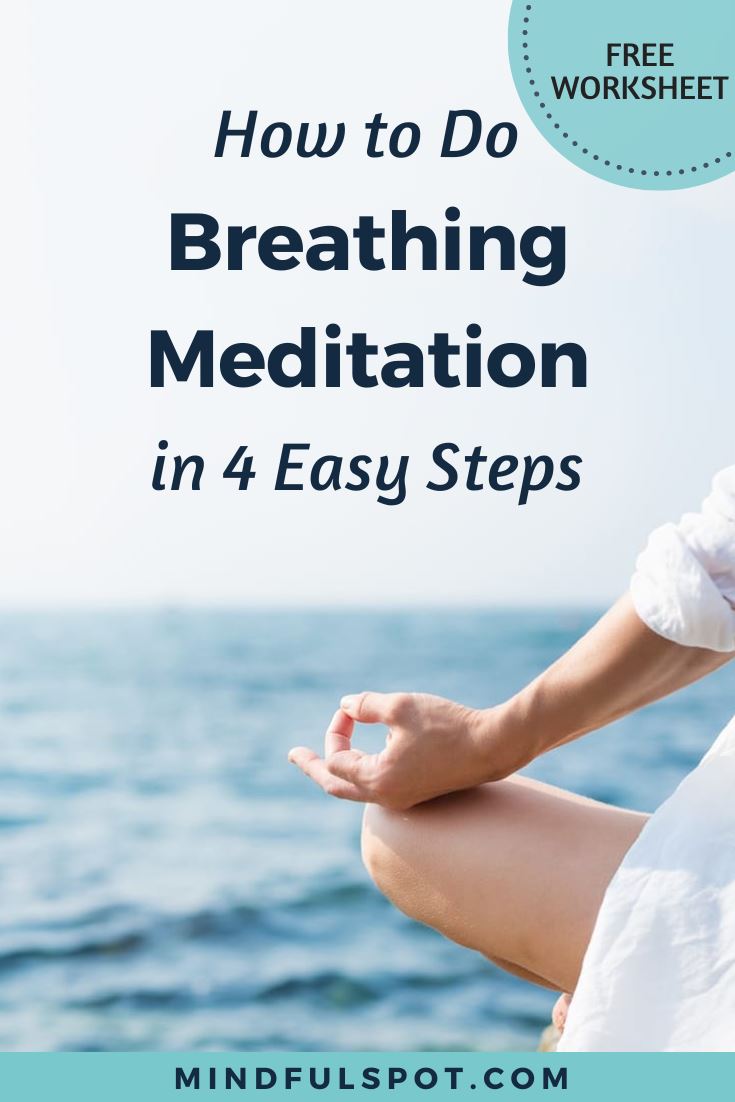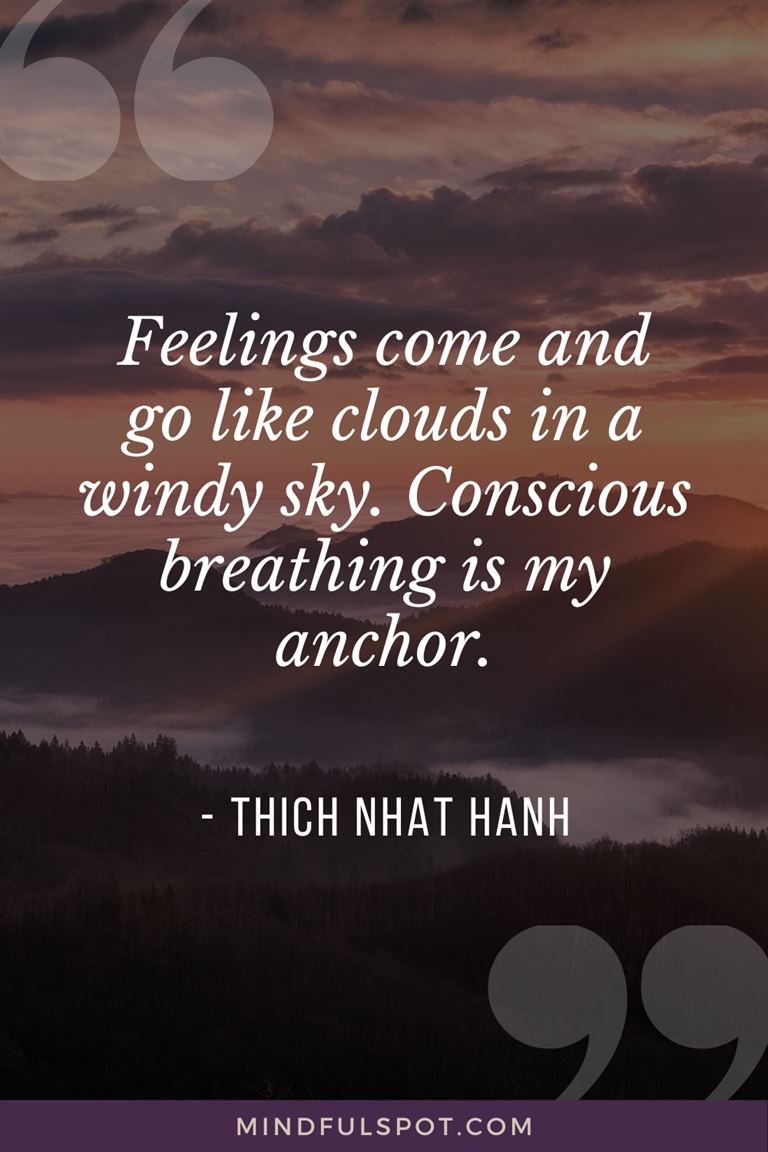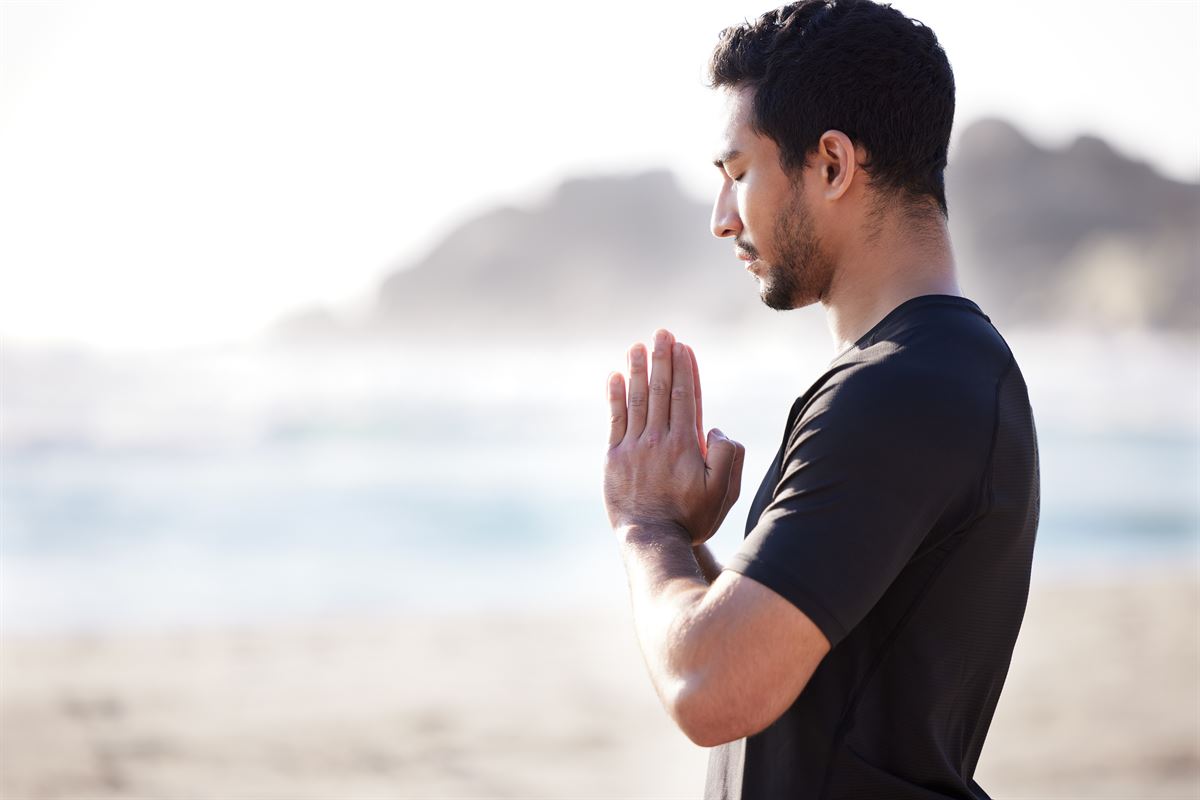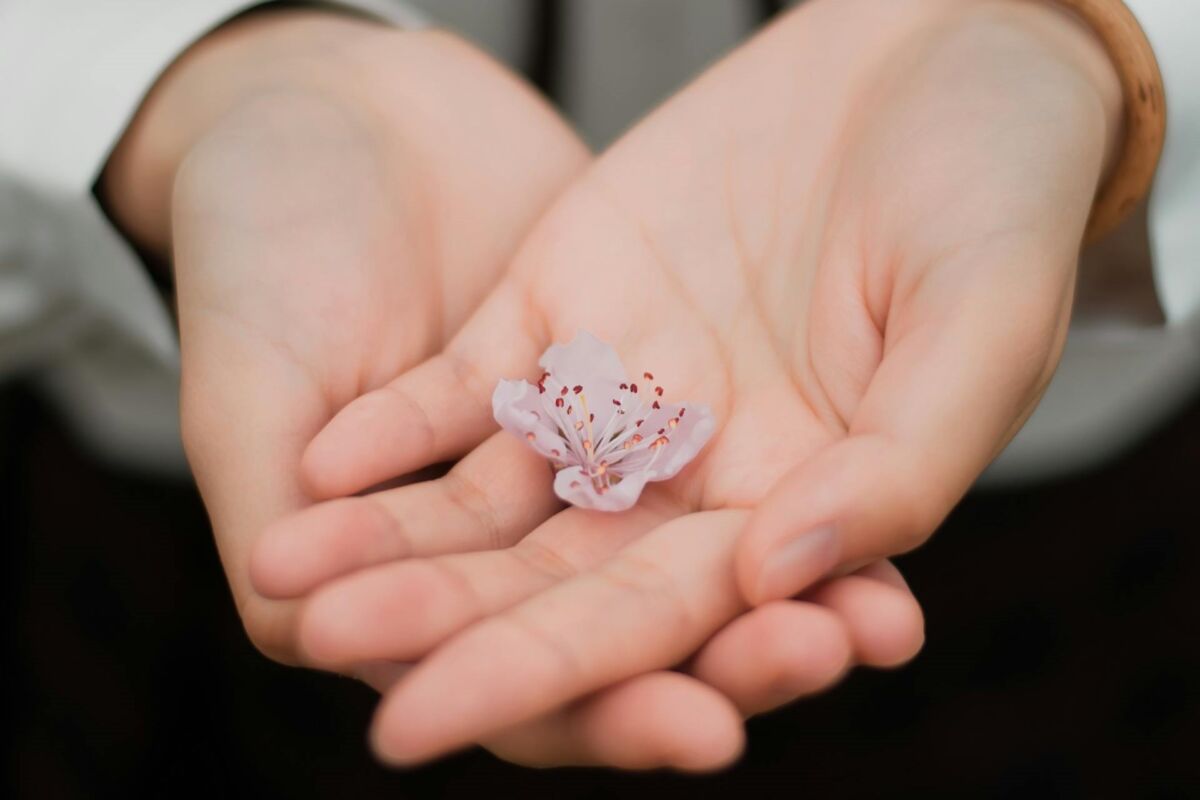Have you noticed how taking a deep breath always calms you down?
This happens because the quality of your breathing mirrors your physical and mental state.
It quickens when you’re agitated and slows down as you relax. As the breathing stills, your mind becomes correspondingly composed. Experiencing your mind stilled in this way is deeply satisfying. And breathing meditation is a tool that can help you master this process.
What Is Breathing Meditation?

Mindful breathing — also known as anapanasati — is an ancient Buddhist meditation technique that teaches us to befriend our breathing and, in doing so, befriend our minds.

FREE Self-Test: How Spiritual Are You?
The principle behind breathing meditation is very simple: We observe our breath to achieve a deep state of concentration and tranquility.
Before You Begin
Set your timer to 10 minutes with 5 intervals, 2 minutes each — I recommend an app called Enso to do this.
After that, choose a comfortable meditation posture: sitting on a chair, kneeling, or lying down. Then take a few deep breaths to relax and close your eyes.
At this preliminary stage, do a brief body scan: feel each part of your body from head to toe and release tension in the muscles. Pay attention to your eyes, jaw, tongue, shoulders, lower back, hands, and legs. As you hear the first ring of your timer, you are ready to proceed to the breathing meditation described below.
How to Practice Breathing Meditation

Here’s a popular version of breathing technique based on the book Buddhist Meditation: Tranquility, Imagination, and Insight by Kamalashila.
1. Count After Each Out-Breath
Take your attention onto the breathing. As much as you can, let each breath come as it will without altering the natural flow. Don’t try to breathe ‘normally.’ Just allow the breaths to come short or long and to feel as awkward, rough or self-consciously controlled as they like. … Be confident that in experiencing each breath just as it is, you are practicing correctly.
Now, to make your attention more continuous, tag each breath with a count. As the out-breath finishes, silently count: one. Feel another breath coming in and going out: two. Feel another in-breath, another out-breath: three. Keep noting each out-breath like that; and once you get to ten, return to one and repeat the sequence.
2. Count Before Each In-Breath
Now count before each breath comes in. Count one, and experience the flow of a breath coming in and going out again. Then count two, and again feel the inward and outward breath. Count three, feeling once again the in- and out-breath, and continue counting each in-breath in that way until you get to ten. Then return to one and repeat the sequence.
It’s a very slight change, but it makes a difference. You’ll probably find your attention sharpening up a bit, and now you have to take a slightly more active stance. This stage helps to establish concentration more firmly. Maintain the counting sequence as before, patiently bringing your attention back to the breath sensation again and again when it wonders.

3. Experience the flow of the breath
Now let go of the counting method and feel the natural flow of breathing coursing through all the body. Pay special attention to the turning points, where the tide of breathing turns from out to in and from in to out. This stage generates awareness of the whole volume of the breath, helping to maintain your concentration from breath to breath to breath.
Allow the breathing to quieten naturally, and let both your mind and your body quieten with it. Your attention and your physical posture are likely to become calmer and more refined now. As you tune in more to the body, feel its energy and include that in the meditation. When you do that, it can feel as though the concentration is coming from the body as much as the mind.
4. Experience the subtle sensation of the breath
Next, focus on the sensation at the point where you feel the air entering and leaving your body. Choose any point that seems right and remain focused there. The sensation will be clearest around your nostrils or upper lip, or perhaps further in or down towards the throat.
As your breath passes this point, you may feel it as a soft, brushing sensation that is cool as it enters and warm as it leaves. Remain with that single point of sensation as uninterruptedly as you can. Be receptive to the slight changes at each phase of the in-breath and the out-breath and at the turning points between them. Focus so closely that you almost listen to the sensation.
10-Minute Guided Breathing Meditation Audio
Here’s a 10-minute guided breathing meditation by Kamalashila, courtesy of Free Buddhist Audio.
How to use this recording:
- Read the steps above.
- Choose a comfortable meditation posture.
- Press “play,” close your eyes, and follow the instructions.
- Don’t worry about prolonged silence. The sound of the bell will signal the start and end of each meditation step.
Optional Journaling Prompts
In the beginning, you’ll inevitably have many thoughts that interrupt your concentration, so the following journaling prompts are centered around them:
- Was there any negative thought that kept coming up again and again during your meditation?
- What does that thought reveal about your state of mind?
- Did interrupting thoughts uncover any patterns you need to change to improve your mental well-being?
These are just suggestions. As you practice more and more, the questions you ask yourself will change, both in depth and scope.
In Conclusion
Meditation helps you be completely still and present. If only for a moment, you notice a tiny space between you and your thoughts..
In other words, you become an awareness in the background of your thoughts. And with each meditation session, that awareness grows, allowing you to experience deeper states of calm and presence in your life. Start practicing breathing meditation today by downloading a free worksheet below:
I’m a freelance writer and mindfulness advocate behind this blog. I started my meditation practice in 2014, and in 2017 I launched this website to share what I learn with others. Here are the three things you can do here:
1. Schedule a free consult if you want to learn Buddhist meditation.
2. Download free mindfulness resources for stress relief
3. Join Patreon for exclusive content and community meetings.









Thanks for the exercise and the peace it restores to the body. Would like to receive more of these exercises for better awareness.
Hi Chris, I’m glad you found it helpful. Right now I’m working on new free training, and when I finish it, I will send a separate announcement via my weekly newsletter. In the meantime feel free to reach out to me via email if you have any questions about this technique.
Thank you so much for this perfect information soo useful and knowlegable.. Doing a grate job
Hi Hema, thank you for the kind words. I’m glad you liked the post.